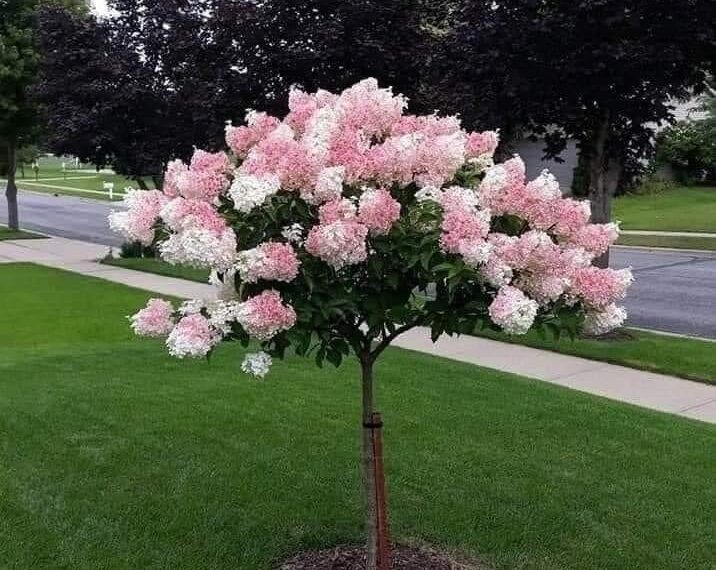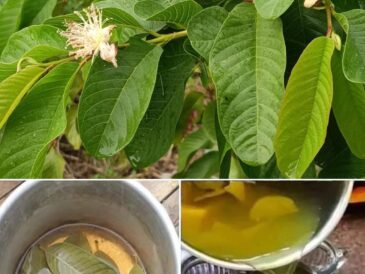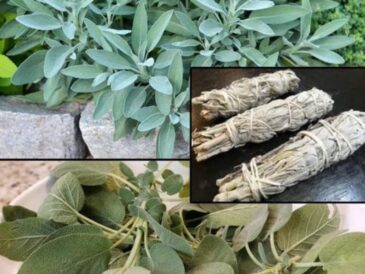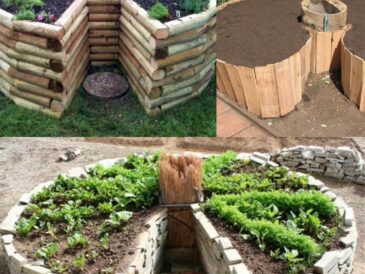The Strawberry Vanilla hydrangea tree is a show-stopping addition to any garden. Its cone-shaped blooms transition from creamy white to soft pink and eventually to a deep red as the season progresses, resembling a scoop of strawberry and vanilla ice cream. While hydrangeas are often associated with shrubs, they can also be trained into stunning small trees, making them ideal for focal points in your landscape.
This guide will walk you through everything you need to know about growing and caring for a hydrangea tree, specifically the Strawberry Vanilla variety.
What is a Hydrangea Tree?
A hydrangea tree is essentially a shrub that has been pruned and trained to grow with a single trunk, creating a tree-like appearance. Strawberry Vanilla hydrangea (Hydrangea paniculata ‘Renhy’) is particularly suited for this style due to its upright growth habit and spectacular blossoms.
Benefits of Growing a Hydrangea Tree
- Aesthetic Appeal: Adds vertical interest and a unique focal point to your garden.
- Long Blooming Season: Flowers from mid-summer to early fall.
- Cold-Hardy: Thrives in zones 4–8, making it suitable for various climates.
- Pollinator-Friendly: Attracts bees and butterflies, enhancing your garden’s ecosystem.
How to Plant a Strawberry Vanilla Hydrangea Tree
1. Choose the Right Location
- Light Requirements: Hydrangea trees thrive in full sun to partial shade. Ideally, they should get 4–6 hours of sunlight daily.
- Soil: Prefers well-drained, loamy soil that is rich in organic matter. Avoid waterlogged areas.
- Space: Allow at least 6–8 feet of space around the tree for proper air circulation and growth.
2. Prepare the Soil
- Test the soil pH. Hydrangeas prefer slightly acidic to neutral soil (pH 6.0–7.0).
- Mix compost or well-rotted manure into the planting site to improve fertility and drainage.
3. Planting Steps
- Dig a hole twice as wide and the same depth as the root ball.
- Place the tree in the hole, ensuring the top of the root ball is level with the ground.
- Backfill with a mix of native soil and compost, gently tamping down to remove air pockets.
- Water thoroughly to settle the soil.
Caring for Your Hydrangea Tree
1. Watering
- Keep the soil consistently moist but not soggy. Water deeply once or twice a week, depending on weather conditions.
- Use mulch around the base to retain moisture and regulate soil temperature.
2. Fertilizing
- Feed your hydrangea tree in early spring with a balanced, slow-release fertilizer.
- Avoid over-fertilizing, as this can lead to excessive foliage growth at the expense of flowers.
3. Pruning
- Prune in late winter or early spring before new growth begins.
- Focus on removing dead or weak branches to encourage healthy, vigorous blooms.
- Shape the tree to maintain its structure by trimming any growth below the main canopy.
4. Pest and Disease Management
- Inspect regularly for pests like aphids and spider mites. Treat infestations with insecticidal soap or neem oil.
- Prevent fungal diseases by avoiding overhead watering and ensuring good air circulation.
How to Train a Hydrangea into a Tree Form
If starting from a young shrub, follow these steps:




